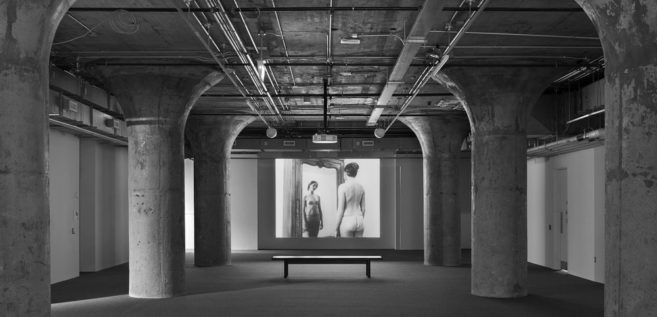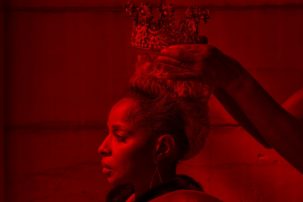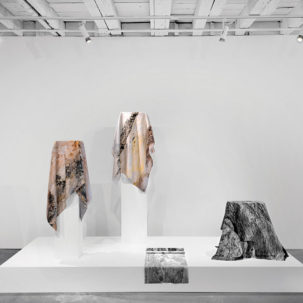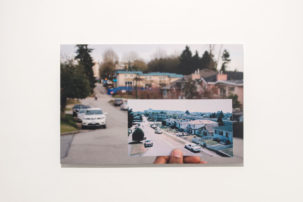“I have no sister, no mother, no children left. Only a tideless ocean of moonlight women.” So speaks London-based artist Beatrice Gibson in the voiceover to her experimental film I Hope I’m Loud When I’m Dead. Presenting impressions of family, feminist legacies, protest and collectivity, Gibson imbues her moving images and sounds with care and intimacy. Stills, slow pans, strobe-like image sequences, bleeding colour palettes and delicate voiceovers evoke familial memories and pose questions about how to live in the world as it violently devolves in disorienting change. In one scene, with Trump’s inaugural speech playing in the background, poets CAConrad and Eileen Myles shuffle tarot cards and read poems in the enclave of Myles’s New York living room. Citing Audre Lorde, Adrienne Rich and Alice Notley, the voiceover is a kind of love letter to Gibson’s young daughter, who will one day face the outcome of these changing times. The film ends with a re-enactment of Denis Levant’s epic dance at the end of Claire Denis’s movie Beau Travail (1999), here performed by Gibson and her young son.
On now at Mercer Union is I Hope I’m Loud When I’m Dead and Deux Soeurs Qui Ne Sont Pas Soeurs, another film, created with Gibson’s friends and loosely based on Gertrude Stein’s very short story “Two Sisters Who Are Not Sisters.” Literature was Gibson’s first love, and as a filmmaker she undoes traditional approaches to narrative to see how it might be reassembled through collaboration. Over the phone from London, we talk about her recent works, feminism, her citation practices and her place in the world, as well as how motherhood gave her a new perspective on politics and how her collaborative working process has transformed throughout her career.
Yaniya Lee: You wrote a letter—an open letter—to Eileen Myles, which was published in Frieze. In it, you talk about wanting to make films that feel the way their poems feel. What were you aiming to do with your film I Hope I’m Loud When I’m Dead? Do you feel like it worked?
Beatrice Gibson: When you read an essay by Eileen Myles, you feel space open up in your head. You can connect to it because it’s from the body, it’s from the heart, but it’s also searingly intelligent and bright. It shifts depending on what epoch or decade you’re in, but there’s a tendency within avant-garde artistic discourse to value the head over the heart, to not value emotions at all as a kind of critical category.
[Another] thing I’ve thought about a lot is—basically, I love cinema. I love going to the cinema and crying and experiencing moving images—the screen—in a visceral way. And so I wanted to use the thing I love about cinema and deploy it in this alternative space of artistic discourse, or experimental cinema, and try to think about how to use it in a way that felt productive. I wanted to achieve that with I Hope I’m Loud When I’m Dead, but not in a saccharine or uncritical way.
I [also] thought a lot about the word “movement” and making people move, whether that’s in relation to political movements or to literally being moved by something. I want people to stay in the room, to engage, and for there to be a reason to do so.
YL: The installation at Mercer Union felt different than going to a typical movie theatre: it was very dark, and the sound was amazing. You felt almost enclosed as you were viewing it. Was it important to you that the audience experience it that way?
BG: It’s funny you say that because in a way I’m always trying to replicate cinema. I’m always trying to recreate that very attentive mode that happens in cinema. Ideally I want people to watch from beginning to end, but I know that’s not the condition of a museum, and that’s not necessarily going to happen. But in a way, I’m always trying to echo those conditions—the very immersive conditions of cinema.
In a space like Mercer, or more generically in an institutional space, you have the opportunity to design your own personal viewing room—a sort of cinema. It feels more intimate just by virtue of the nature of the institution versus the cinema. I also think the key difference is that cinema it is a very collective experience, whereas an art space is somehow definitely an individual space. Even if you’re watching in the room with a lot of people, you’re all kind of watching alone in the sense that you’re not all required to sit down at the same time and watch to the end together.
Most of my films have produced temporary communities in their making, and that’s been one of their intentions.
YL: Could you talk a bit about process? It seems like you shift your methodology with each project, and that the methodology itself changes depending on who you’re working with. How do you manage these shifting registers of control?
BG: That’s a very complicated question. I think I’ve often been really interested—in a process sense—in the kind of contradiction or conversation between control and chaos, and in designing production structures that on the one hand are very composed, but then on the other hand contain within them the possibility of chaos. Like, I chose to work with Eileen Myles, but I didn’t specify what I wanted them to do, what I wanted them to read. So from concrete things like that to even more unruly examples of letting go of control of the process, that’s always been in the background in most of the productions, most of the films, most of the work.
This other thing that’s started happening is that often the subject I choose becomes the method. There’s this collapse of form and content. For example, in I Hope I’m Loud When I’m Dead, I went to New York and filmed material with both Eileen and CA[Conrad] together in Eileen’s apartment. I didn’t really know what the film was going to be. I came back to London and originally thought it might be something a little bit more documentary. Then the film actually took this very personal and autobiographical turn, and I think a lot of that [is because], rather than just wanting to make a portrait of the two poets, I’m adopting their methods as my own. Rather than just making a film about Eileen Myles, I’m thinking about Eileen’s poetry and the kinds of things it proposes and trying to propose those to the making of the film itself.
YL: It’s like the film itself comes to embody their ideas. They’re in it, but it’s not a portrait of them.
BG: Exactly. That seemed like a nice way to do justice to them and their poetry and the political urgency of it, by actually embodying it and deploying it rather than just displaying it or representing it.
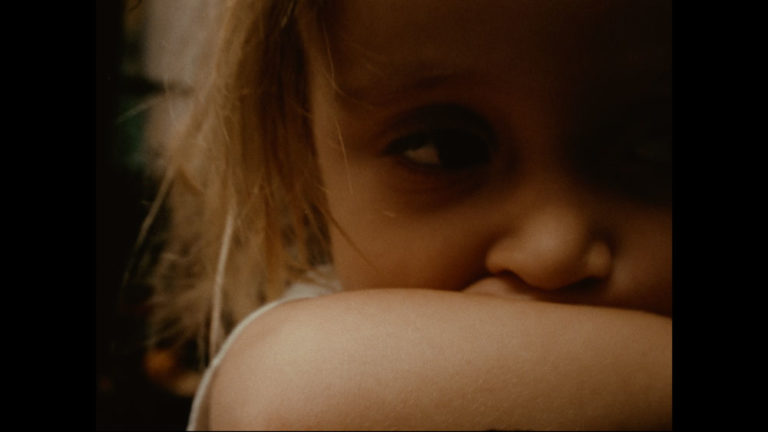 Beatrice Gibson, I Hope I'm Loud When I'm Dead (still), 2018. 20 min.
Beatrice Gibson, I Hope I'm Loud When I'm Dead (still), 2018. 20 min.
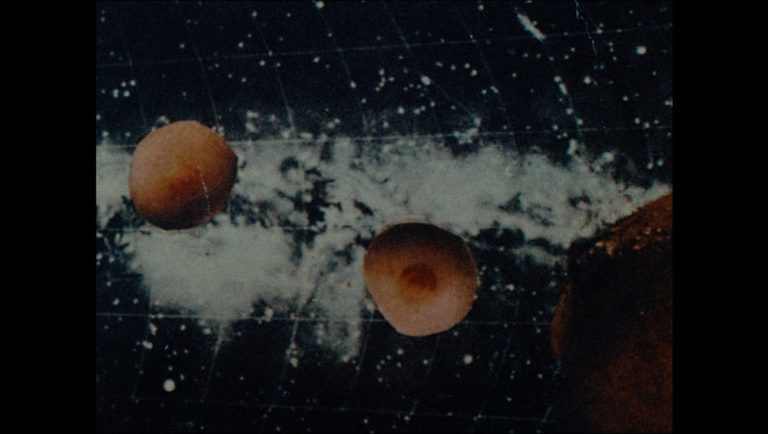 Beatrice Gibson, I Hope I'm Loud When I'm Dead (still), 2018. 20 min.
Beatrice Gibson, I Hope I'm Loud When I'm Dead (still), 2018. 20 min.
YL: You’ve said that becoming a mom is likely to turn one into a “mega feminist.” What was that shift like for you? What is it about motherhood that makes one think differently about politics and our positions in the world?
BG: I think it’s very concrete. I come from a privileged place and up until [becoming a mom] I felt like I had equal access to all the things that my male contemporaries did. And then when you become a mother, very concretely you encounter political inequalities, whether it’s maternity leave or even just cultural expectations or biological difference. Its mind bendingly hard to get your head around! And it’s so hard to distinguish between what’s learned, what’s cultural, what’s biological, what’s political. At the same time, it’s like a major identity crisis. But that’s maybe too much information! [laughs]
YL: No, its not! As I watched your films, I also thought about family units. You often collaborate with your friends and bring them into your films. To me that seems like a beautiful way to make work part of life—to make work more porous and pleasurable.
BG: I’m sure in a way it comes out of necessity, and I can draw a line through it retrospectively. It’s definitely something I’m increasingly trying to incorporate into my practice—to make space and time for my friendships, space and time I don’t have anymore because I basically have to stay home after six o’clock.
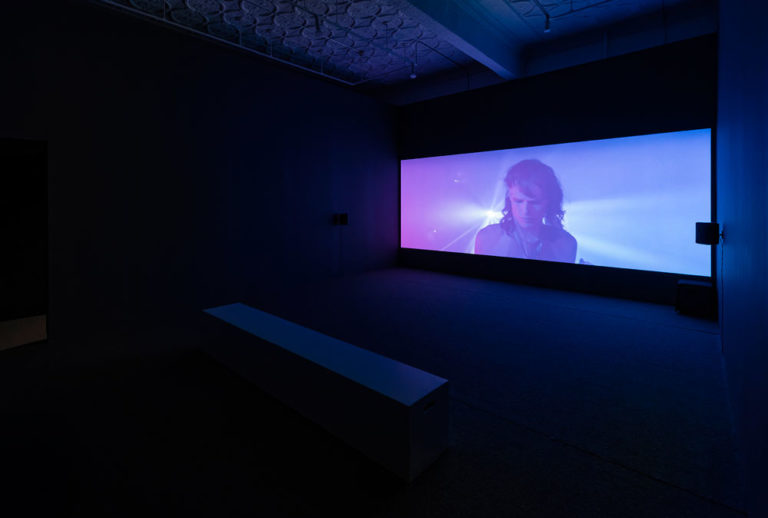 Beatrice Gibson, Deux Soeurs Qui Ne Sont Pas Soeurs, 2019. 20 min. Installation view at Mercer Union, Toronto.
Beatrice Gibson, Deux Soeurs Qui Ne Sont Pas Soeurs, 2019. 20 min. Installation view at Mercer Union, Toronto.
Historically, I have always done that. Most of the films I’ve made have produced temporary communities, and that’s been one of their intentions, whether it’s friends acting in them or setting up a process that allows me to have conversations with colleagues and fellow practitioners and friends. Post having a family that has become something I want to collapse with my working life even more.
I also have this film club that I do with Ben Rivers, Erika Balsom and Maria Palacios Cruz, which came out of a similar [feeling]. I really wanted to watch films with my friends and have the time to talk about them, but that seems like some kind of pipe dream when you have to stay home every night for your second job, which is feeding the children and giving them a bath and putting them to bed. And so the only way to do that was to make it a concrete part of my working life. The film club became a thing that we proposed to an institution, who then started to support it by paying for the screenings and a commissioned essay, and then there was a formalized structure in space and time for me to do something as simple as watch films and talk about them with my friends.
YL: I love that. I’m caught on this thing you said earlier, that your films “produce temporary communities.” I think about this a lot: how we can create different ways of being together. If politics is so fucked and feminism is about recognizing those power imbalances, I really believe that if we relate to each other differently we can create change. But it happens instance by instance, and it happens in these temporary communities—it’s these reading groups, it’s film-viewing groups—and hopefully through the process of creating those spaces larger change will happen. I don’t know.
BG: Definitely, definitely, definitely.

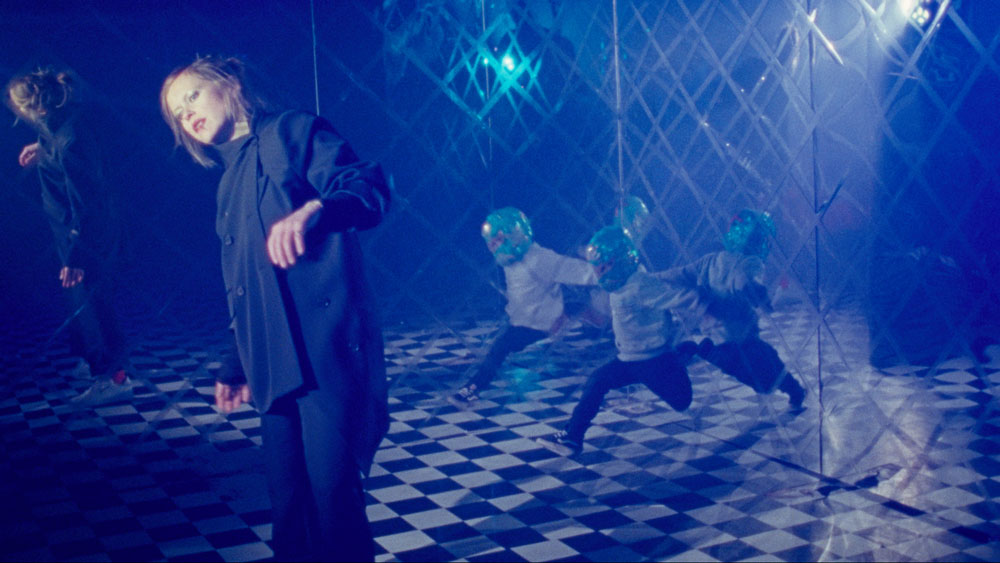 Beatrice Gibson, I Hope I'm Loud When I'm Dead (still), 2018. 20 min.
Beatrice Gibson, I Hope I'm Loud When I'm Dead (still), 2018. 20 min.
